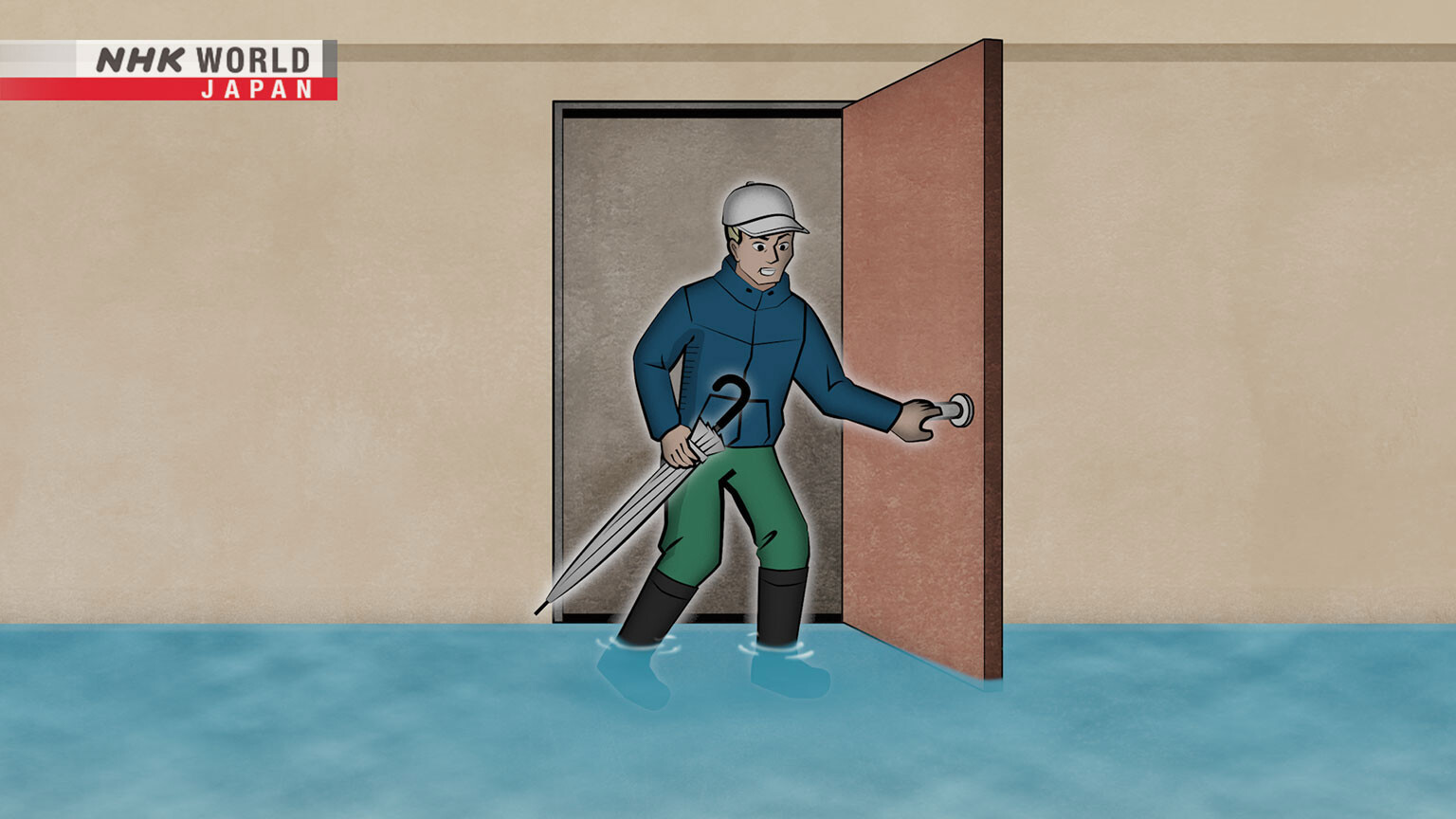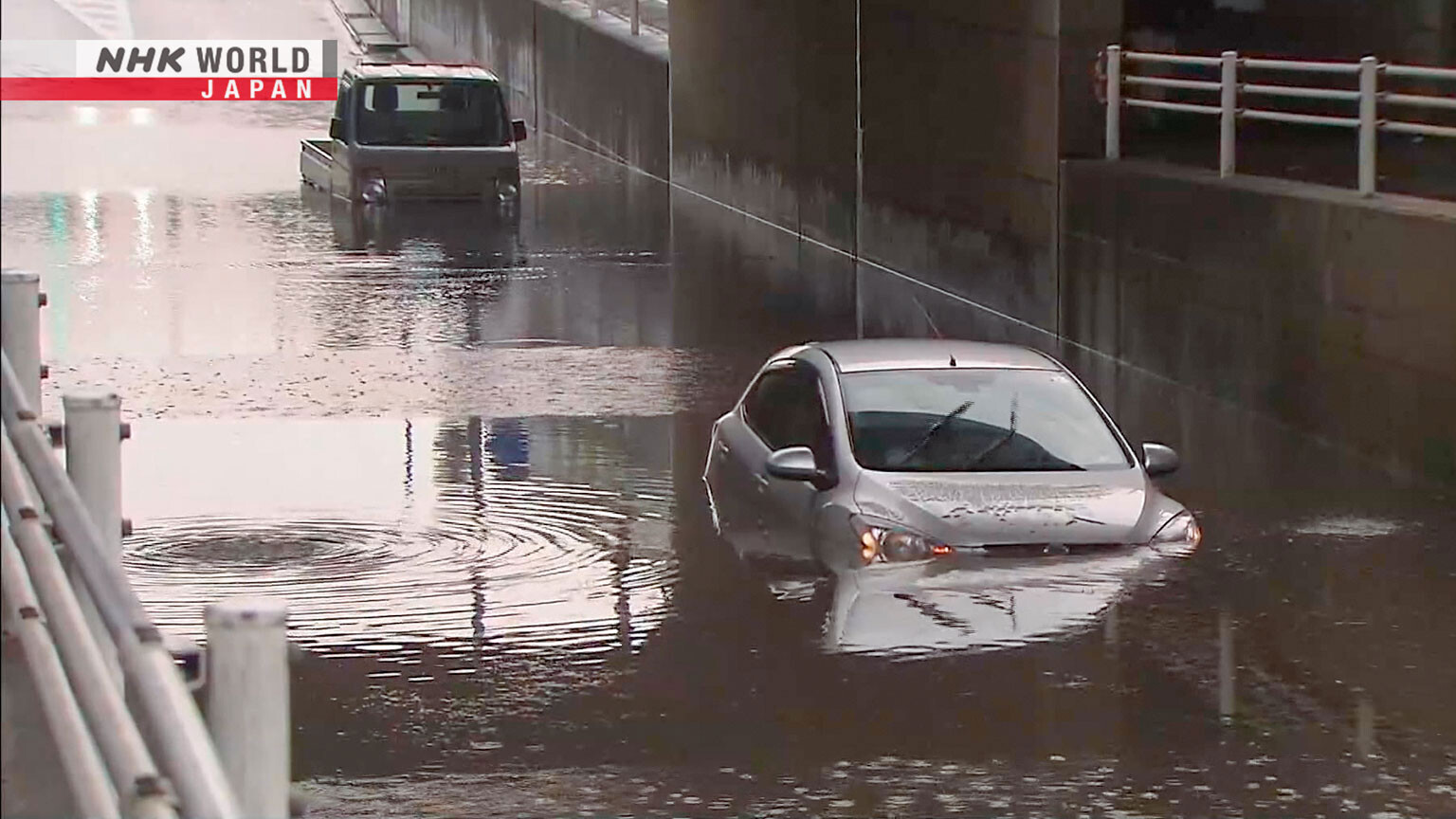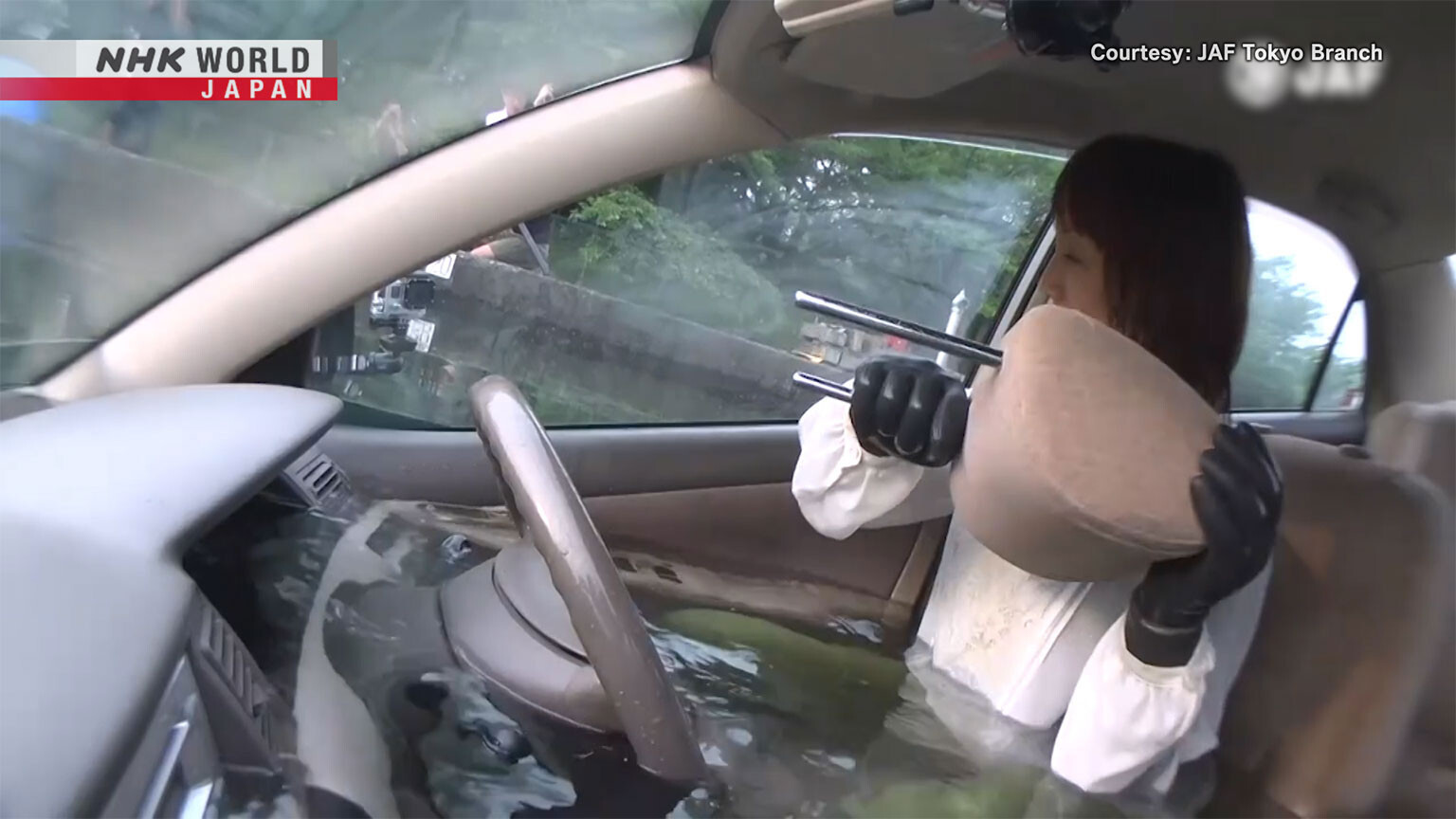#42 How to Survive a Flood
What does it take to survive a flood? Japan has developed survival skills for floods through experiences such as typhoons. Find out how to safely navigate flooded streets and escape sinking cars.




Transcript
Now, floods are becoming more severe worldwide, due to factors such as climate change.
When faced with the threat of water, are you able to survive?
Today, we'll be looking at how to survive floods.
Throughout its long history, Japan has gained wisdom from experiencing disasters, such as typhoons.
What does it take to escape a flooded city?
We conducted an experiment with a large-scale equipment.
My legs feel lighter.
I could evacuate faster.
And... how do you escape from a sinking vehicle?
Discover the wisdom of Japan, that will help you survive a flood.
BOSAI: Science that Can Save Your Life.
How do you protect yourself from floods?
The most important rule is to evacuate early, before the flood occurs.
However, events such as heavy downpour can cause a city to flood rapidly.
We'll start by introducing ways to navigate through a flooded city.
In regions prone to heavy rain, it's not uncommon for streets to become flooded with water levels reaching ankle-deep.
However, it's important not to underestimate the situation, by thinking that it's no big deal.
There could be life-threatening risks involved.
Now, here's a question for you.
This man you see here is trying to evacuate.
Can you identify the item that would not be recommended for evacuation?
To help us with the answer is Yasuo NIHEI, from Tokyo University of Science.
Hello.
I'm trying to spot what's wrong with this illustration.
Yes. There is one big mistake. What do you think, Lemi?
He's wearing a cap and it might get blown away.
It's true that a helmet gives you better protection. But if you don't have one, wear a cap.
The answer is the tall rain boots.
The rain boots?
What exactly is wrong with wearing tall rubber boots?
Let's test it with an experiment using a large water tank.
The water level is approximately 40 centimeters.
To simulate flooded roads, they made the water muddy, and placed obstacles such as blocks.
Here we go.
I proceeded cautiously, paying attention to each step.
Although I can't move so fast, everything appears to be fine.
However,
The water is entering my boots.
Water was gradually making its way into my boots through this small gap.
Once water enters, it weighs you down so it's hard to lift my legs up.
In addition to the heavy boots,
your energy is drained by the efforts required to avoid the various obstacles in the water.
I can't go any further.
I was already exhausted after walking just 8 meters.
Look at all the water in my boots.
When they fill up, they slip off easily.
They're not suitable for evacuating.
It turns out that tall rain boots are not appropriate for evacuation.
When evacuating, what should we wear?
I recommend sneakers like these.
Choose ones that you're comfortable with, and lace-ups are less likely to come off in water.
Why exactly are sneakers suitable for evacuation?
I tried the experiment again, this time with sneakers.
On the surface, it appears to be the same as before, however...
My feet are lighter.
The rain boots felt heavier and harder to move forward.
The sneakers are easier and more stable.
I can walk much faster.
I was able to easily walk all the way to the end.
It's so much easier.
Take a look at the picture again.
There's an important item used during evacuation.
It's...the umbrella.
However, it's not used in the normal way we do during rain.
There's a special way to use it.
How should the umbrella be used?
Floodwater is murky like this, making it hard to see the bottom.
So the umbrella is used like a cane to check the ground near your feet.
The umbrella isn't meant for keeping dry, but instead, it's used to check your footing.
You can tell when you feel a different texture.
There's something hard here.
It's risky so I'll walk around it.
During evacuation, choosing to wear comfortable sneakers and having an umbrella will help increase your safety.
The basic rule is not to go into the water.
Right. There are now apps that provide important information.
You should first check information about heavy rain and water levels, then evacuate promptly.
Next, let's find out how to survive when you're trapped in a sinking vehicle.
The engine stopped and you're trapped inside.
The car is sinking fast.
What should we do in a situation like this?
Here to help us is YAMANE Takafumi, from Japan Automobile Federation.
He is an expert in traffic safety and disaster response.
What should we do if our car is sinking?
First, stay calm. Then think about how to escape.
If your vehicle gets stuck in an underpass or falls into a river,
the most important thing to do is to get out of the car immediately and seek safety in a higher place.
You should never remain inside the vehicle.
This is an experiment simulating a sinking vehicle.
When a car is sinking, water quickly enters through gaps such as the door.
Here, one fourth of the door is underwater.
Can the driver escape in this situation?
The driver attempts to open the door several times, but it's impossible to open against the water pressure.
Even after one minute, she still could not open the door to escape.
Trying to escape through the window, may not work either.
The car's engine can be flooded even in 30 centimeters of water, and cause electrical system failure.
Attempts to break the window with objects inside the car are likely to fail.
Although it's a dire situation, it's still too early to give up.
There are ways for you to survive.
If the doors and windows won't open, how should we get out?
In that situation, if the water pressure inside and outside the car is equalized, the door will open.
As the car began to sink gradually...
it almost seemed hopeless.
However, the driver was suddenly able to open the door.
How could this be?
Water pressure increases proportionally with the depth of water.
Before submersion, it required 4 kilograms of force to open the door.
On the other hand, at the depth of 60 centimeters, it measured 20 kilograms.
It took 5 times the force to open the door, due to water pressure.
When a vehicle sinks, water pressure acts from both inside and outside the car.
Initially, the door wouldn't open, because the external water pressure was higher.
However, as the car continued to flood and the water level inside and outside became the same,
the water pressure also equalized, allowing the door to open.
I might start to panic, worrying that the door may not open.
Is there a better way?
Actually, there is.
And this is what we use.
What exactly is it?
This is a called an escape hammer.
The secret is at the tip of the hammer.
This tool is used for escaping a car during flooding or traffic accidents, where you are trapped inside the car.
The metal tip is used for breaking the window.
The driver was able to break the window without much force.
Strike the metal tip perpendicular to the window.
Perpendicular.
By striking the window perpendicularly with the tip,
the force is concentrated at one point, allowing you to break the glass with minimal effort.
It's a good idea to keep one in your car, especially if you're in an area prone to flooding.
In heavy rain, it's dangerous to assume that you're safe since you're evacuating by car.
Avoid flooded areas and underpasses, as they are extremely hazardous.
Let's go over today's key points.
When heavy rain is in the forecast, it's essential to gather information and evacuate promptly.
If you have no choice but to walk on flooded roads, wear comfortable sneakers.
You should use an umbrella to check the ground.
When you're evacuating by car, make sure to have an escape hammer inside the vehicle.